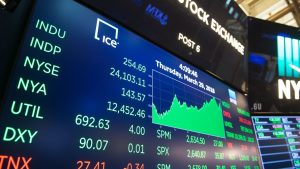Forex Trading and Market Sentiment

It is important to know how to read the market mood, as that will likely guarantee you a position in the arena. Sometimes volatility or sentiment analysis counts in order to stay ahead of the competition and not be left behind.
Market sentiment is a collective perception of traders and investors about what is happening in a particular financial market, about how we think prices will move up or down.
Contents
How to Analyze Market Sentiment
An indicator to understand the overall sentiment towards an instrument in the market. Market sentiment takes into account a plethora of factors that might influence trading ideas, including economic indicators, news events and geopolitical developments.
The task of Forex trading – a kind of speculation – is to understand where market sentiment is, so that you know whether market players are optimistic and think that prices are going to increase or whether they are pessimistic and think that prices are going down, and then on that basis decide what kind of currency pairs you want to trade and where in those pairs you want to put your stop losses.
Market sentiment analysis is a complex and difficult task which requires many different tools and techniques. One traditional approach is just to keep your eye on your target by watching for significant economic news releases that might impact the market. You can alternatively check your broker’s order book, to see what proportion of all the traders is long and what proportion is short on individual currency pairs – but be sure to check that the figures you see add up to 100 per cent across all brokers, otherwise they might not be accurate.
Fear & Greed Index
Fear and Greed Index is a market sentiment indicator that measures investor mood based on a number of indicators through one gauge. The index assigns a score from 0 to 100 to sentiment analysis (where 0 is considered extreme fear and 100 is considered extreme greed). There are seven indicators being used: market momentum, stock price strength, market breadth, put/call option demand, junk bond demand, safe haven demand and fear or greed survey.
Using this gauge might help traders to discern when sentiment changes, and when investors are at extremes. For instance, perhaps the Index registers elevated levels of investor greed and the market reaches new heights, and so any stocks at which greed is focused might be a good short term opportunity for contrarian investors to buy at a discount to reality.
Like any market indicator, just remember that the Index cannot be perfect; there are data points out of our control, whether it is an unusual geopolitical event that might create shocks to the system (like the US presidential election) or unexpected economic data. When we consider it alone, we can only think of it as an adjunct indicator.
CBOE Volatility Index
Investors’ moods affect their behaviour; investors who feel nervous or scared can sell off assets while positive feelings can increase buying – and can create volatility in the market. Traders often use sentimental indicators, such as social media ‘chatter’, results from investor surveys, mutual fund flows and ETF flows, or put/call ratios.
Avoiding a bad state of the market and maintaining favourable sentiment could give traders that edge. For example, if traders know that sentiment is currently positive, prices are unlikely to reach a level where traders think they are at the peak (greed sets in) or that prices are at a low point where traders fear the worst. Thus, sentiment indicators might serve as a supplement to technical and fundamental analyses as part of an investment strategy. For instance, if traders are able to track specific signals, they can guess, at least on a short-term basis, the direction of the price motion to take advantage of it for higher profit with lower risk over the long term. Inflation data might serve a particular purpose if costs continue to rise and traders start to feel negatively about the status of the market.
Market Sentiment Index
Market sentiment is investors’ and traders’ collective sentiment toward an asset class or security market. Sentiment is either rational or irrational, and has a large impact on future stock prices; being aware of market sentiment will enable you to make better investment decisions for your clients.
There are multiple possible influences on sentiment including short-term news, events, fears and rumours. Increases in sentiment might involve investors who have seen signs or signals that they think determine the market will keep rising, while decreases in sentiment might indicate that they feel the market might start to slip.
When coupled with more traditional indicators, sentiments about the market can give you the tools to be a more discerning trader. Although using sentiment indicators as a core analytical strategy, and more importantly, within your overall trading plan, including risk management, may not be the best idea. Also, beware of using sentiment tools obtained from a particular broker; depending on which broker you go to, you may or may not get an accurate depiction of what the market sentiment is. Additionally, since sentiment can change very rapidly, a quick-reaction trading approach is also necessary to stay ahead of the market.






